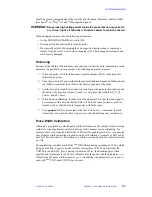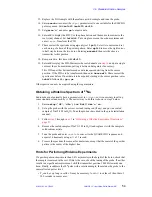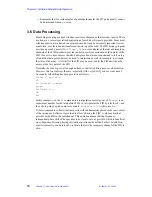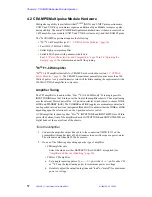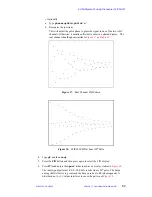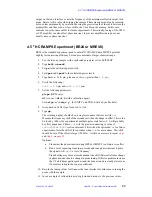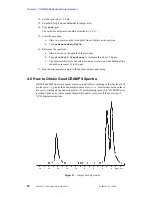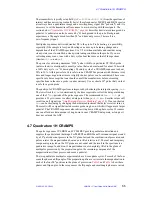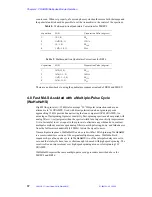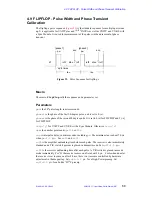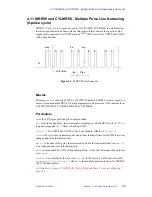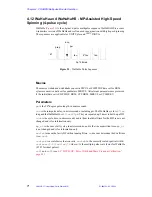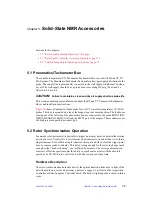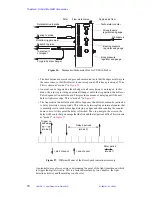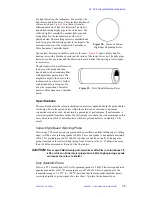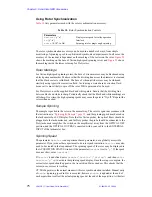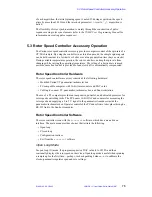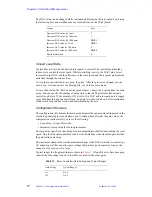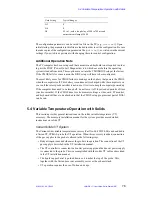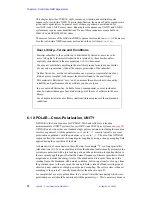
4.7 Quadrature 1H CRAMPS
01-999162-00 C0402
VNMR 6.1C User Guide: Solid-State NMR
66
The transmitter is typically set upfield (
tof=-2000
to
-5000 Hz
) from the spectrum of
interest and line narrowing is usually best at these frequencies. MREV8 and BR24 spectra
also always have a quadrature image and a zero-frequency signal (the "pedestal") and it is
necessary to set the transmitter off resonance to avoid overlap with these signals. The
section below (
“Quadrature 1H CRAMPS,” page 66
) describes how to avoid images and a
pedestal. A pedestal can also be caused by
1
H background in the probe. Background
experiences a flip angle much less than 90
o
and does not precess. The result is a
zero-frequency signal.
Multipulse sequences deliver substantial RF to the probe. Probe heating is a possibility,
especially if the sample is lossy, and heating can cause a probe tuning change and a
degradation of the CRAMPS spectrum. Use VT air when available and consider using
steady-state scans to establish a steady-state tuning condition in the probe. If you are
collecting many scans, tune with a duty cycle about the same as that of the spectrum
(similar
d1
,
tau
and
ss
).
The power for obtaining minimum
1
H 90
o
pulse width for a particular CP/MAS probe
(unless otherwise mentioned) is usually a value that can be sustained for about 50 ms with
a 100% duty cycle (i.e.
1
H decoupling). The duty cycle of a CRAMPS sequence is about
30% to 50%. At this power level it is safe to run a CRAMPS experiment with the same total-
time and longer acquisition times or slightly shorter pulses can be considered. There is no
specific rule here except that one should consult the manufacturer before exceeding
specifications in the case a probe is under warranty. Use as short a 90
o
pulse that you feel
is safe for a given probe.
The quality of a CRAMPS spectrum is improved by shortening the interpulse spacing,
tau
.
The lower limit for
tau
is determined by the time required to collect the data point during
one of the 2*
tau
periods of the pulse sequence. The recommended
tau = 3.5
µ
s
provides a 5.5
µ
s window to collect a data point when
pw=1.5
µ
s
. Smaller values will
result in a null signal (see
“Amplifier and Receiver Blanking,” page 58
). One can shorten
tau
can be shortening by changing the hardware adjustment that delays receiver turn on.
The result will be a signal that includes some probe ring down, which will appear as a larger
pedestal. The CRAMPS sequences also subtract ring down with a phase cycle of 2 scans so
one can afford a certain amount of ring down in ones CRAMPS data points, as long as it
does not saturate the ADC.
4.7 Quadrature 1H CRAMPS
The pulse sequences CYLBR24 and CYLMREV provide quadrature detection and
suppress the pedestal and the image. For MREV8 and BR24 an off-resonance signal created
by a 90
o
pulse does not precess in the XY plane. Instead the combination of precession and
pulses rotates the magnetization about an axis tilted relative to Z. The real and imaginary
components projected on the XY plane are not equal and the result in the spectrum is a
quadrature image. In addition, if magnetization is not completely tilted to the plane of
multipulse precession by the preparation pulse, the remaining component of the
magnetization will not precess and cause a pedestal.
The two quadrature multipulse experiments have 4-scan phase cycles. For each of the four
scans the phase and flip angle of the preparation pulse are set to rotate the magnetization to
each of the four 90
o
positions in the plane of precession.
and
show these
phases and flip angles. In these sequences the flip angle and small-angle phase are varied

